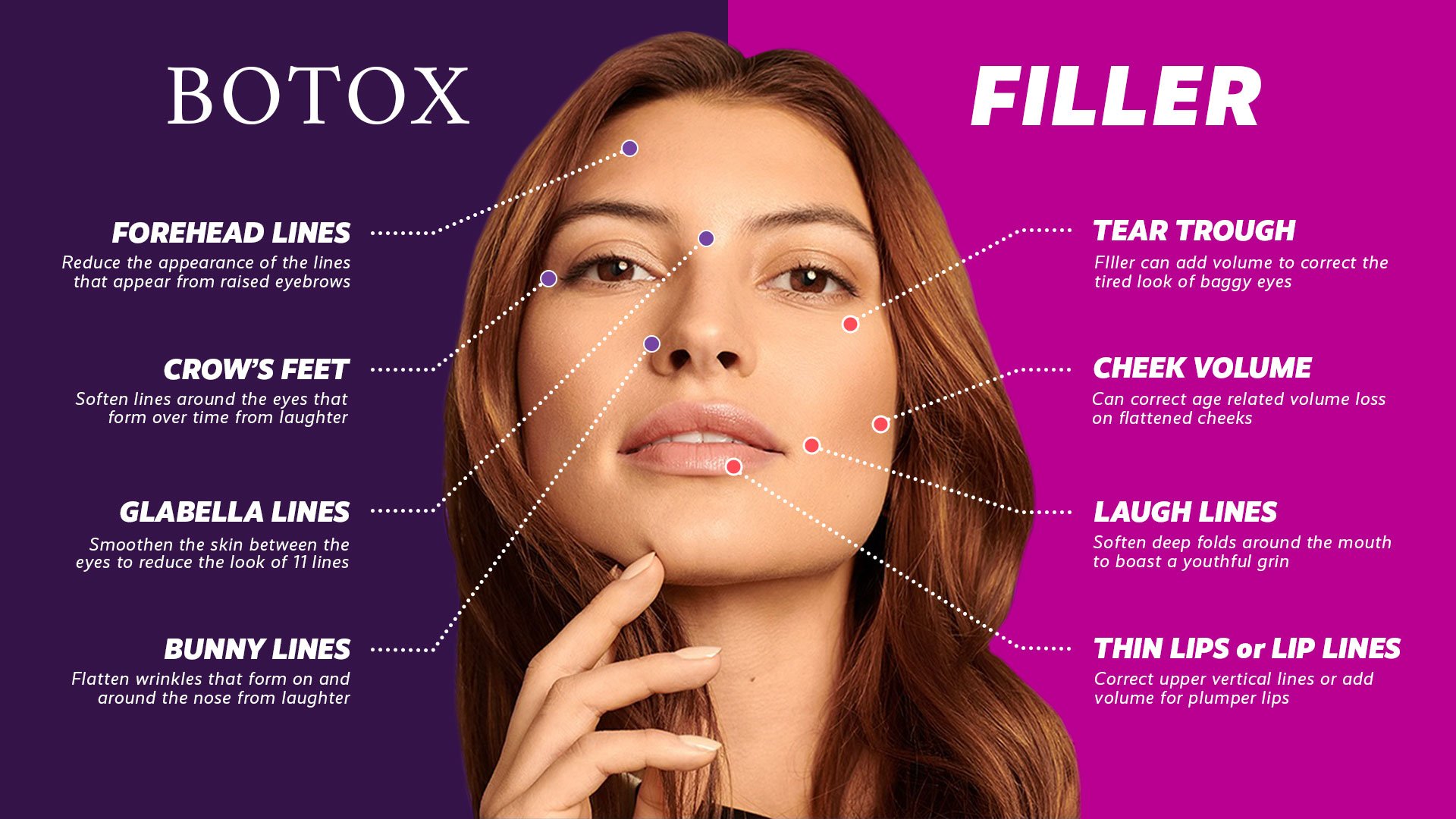Private Aesthetic Neurotoxin Training
Transform your clients’ appearances with our full-face lifting techniques, jawline tightening strategies, and neck rejuvenation methods. Our exclusive training program covers:
Full face lifting
Jawline tightening
Neck rejuvenation
Private Injectable Dermal Fillers Training
Dive into the artistry of dermal fillers and learn to enhance facial features effectively. This course will equip you with techniques for:
Under-eye rejuvenation
Temple volumization
Cheek enhancement
Lip augmentation
Chin contouring
Private Aesthetic Neurotoxins Training Curriculum
1. Introduction to Aesthetic Neurotoxins
What are Aesthetic Neurotoxins: Understanding the substance, its origin, and its medical applications.
Mechanism of action: How neurotoxins work to relax muscles and reduce wrinkles.
2. Anatomy and Physiology
Facial anatomy: Key muscle groups, nerves, and blood vessels relevant to neurotoxin administration.
Skin structure: Understanding how aging affects the skin and the role of neurotoxins in aesthetic treatments.
3. Indications and Contraindications
Common aesthetic uses: Treatment of fine lines, wrinkles, and other facial indications.
Medical uses: Conditions like migraines, excessive sweating (hyperhidrosis), and more.
Contraindications: Situations where neurotoxins should not be used (e.g., pregnant or breastfeeding individuals, certain medical conditions).
4. Consultation and Assessment
Patient consultation: Techniques for evaluating patients’ needs and setting realistic expectations.
Consent and documentation: Importance of informed consent and maintaining patient records.
5. Injection Techniques
Hands-on training: Practical instruction on properly injecting neurotoxins, including needle selection and injection sites.
Dosage and dilution: Guidelines for neurotoxin dosage and how to prepare it for injection.
Safety precautions: Infection control protocols, managing complications, and avoiding adverse effects.
6. Managing Side Effects and Complications
Identifying common side effects: Bruising, swelling, and headaches.
Addressing complications: How to handle more serious reactions, such as ptosis or an allergic response.
7. Post-Treatment Care
Aftercare instructions: Educating patients on what to expect post-treatment and how to care for the area.
Follow-up procedures: Importance of follow-up appointments to monitor results and address any concerns.
8. Business Considerations
Setting up a practice: Guidance on legal considerations, insurance, and business practices for offering neurotoxin services.
Marketing neurotoxin services: Strategies for attracting and retaining clients.
9. Regulatory Compliance
Understanding local laws and regulations surrounding the administration of neurotoxins.
Certification requirements and ongoing education and training.
10. Hands-On Practice
Supervised practice: Allowing trainees ample time to practice injection techniques on models and mannequins.
Feedback and assessment: Opportunities for instructors to provide guidance and assess the skills of participants.
11. Q&A and Discussion
Open and ongoing forum for questions: Encouraging discussion about experiences, challenges, and best practices.
Private Injectable Dermal Fillers Training Curriculum
1. Introduction to Dermal Fillers
Overview of what dermal fillers are
History and evolution of dermal fillers
Types of dermal fillers (Hyaluronic Acid, Calcium Hydroxylapatite, Poly-L-lactic acid, etc.)
FDA-approved fillers and regulations
2. Anatomy and Facial Aesthetics
Basic facial anatomy relevant to filler injections (skin layers, muscles, blood vessels, nerves)
Understanding facial proportions and beauty aesthetics
Assessment of patient’s facial anatomy for filler treatment
3. Indications and Contraindications
Common indications for dermal filler use (wrinkles, volume loss, contouring, etc.)
Contraindications (allergies, autoimmune diseases, pregnancy)
Pre-existing conditions that may affect treatment
4. Consultation Process
Conducting a thorough patient assessment
Setting realistic expectations
Discussing risks, benefits, and potential side effects
Importance of informed consent
5. Injection Techniques
Different injection techniques (linear threading, fanning, cross-hatching, etc.)
Choosing the right filler for specific areas
Hands-on practice with live models and anatomical training aids (if applicable)
6. Safety and Management of Complications
Risks associated with dermal fillers
Identifying and managing complications (bruising, swelling, vascular occlusion)
Use of hyaluronidase in case of adverse events with hyaluronic acid fillers
Post-treatment care and follow-up
7. Marketing and Building a Practice
Strategies for marketing dermal filler services
Building a clientele and maintaining patient relationships
Legal considerations and maintaining compliance
8. Ethical Considerations
Patient ethics and treatment approach
Importance of honesty and transparency in practice
Addressing the psychological aspects of aesthetic treatments
9. Hands-On Practice
Supervised practical sessions on injecting techniques
Opportunities to practice on simulators or live models
Feedback and demonstration by experienced practitioners
10. Q&A and Wrap-Up
Addressing participant questions and concerns
Summary of key takeaways
Continuing education and resources for further learning
Additional Materials
Course handbook with key points and references
Access to video tutorials and online resources
Certificate of completion for professional credentialing

